
Do you have a question about the Samsung S57CG95 N Series and is the answer not in the manual?
| Screen Size | 57 inches |
|---|---|
| Panel Type | VA |
| Refresh Rate | 240Hz |
| Aspect Ratio | 32:9 |
| Curvature | 1000R |
| Viewing Angle | 178°(H)/178°(V) |
| USB Hub | Yes |
| Stand Adjustments | Height, Tilt, Swivel |
| Resolution | 7680 x 2160 |
| Brightness | 1000 cd/m² |
| Connectivity | HDMI 2.1, USB Hub |
| VESA Mount Compatible | Yes |
| Response Time | 1 ms |
| Adaptive Sync | FreeSync Premium Pro |
| Color Gamut | DCI-P3 95% |
Introduction to the user manual and product.
Essential safety guidelines for product use.
Precautions related to electrical safety and power usage.
Initial steps and considerations for product installation.
Basic guidelines for operating the monitor.
Instructions for cleaning the monitor.
Guidance on maintaining proper posture while using the monitor.
Important information before connecting external devices.
Overview of available input/output ports on the monitor.
Steps for connecting and using a PC with the monitor.
Methods for organizing cables effectively.
Instructions for setting the best screen resolution.
Information on panel care features to prevent screen issues.
Settings optimized for gaming performance.
Options for adjusting picture quality.
Settings for Picture-in-Picture and Picture-by-Picture.
Customization of on-screen display elements.
System-level configurations and adjustments.
Resources and information for product support.
Guide to installing the Easy Setting Box software.
Common issues and limitations during software installation.
Minimum hardware and OS requirements for software.
Steps for installing necessary product drivers.
Preparations required before contacting customer service.
Steps to diagnose and resolve screen-related problems.
Verifying screen resolution and refresh rate settings.
General checks to perform when facing issues.
Common questions and their answers.
Details on customer responsibility for service costs.
Situations not classified as product defects.
Identifying product damage due to user mishandling.
Other reasons for service-related issues.
Information on FreeSync technology for AMD graphics cards.
Information on Adaptive-Sync technology for NVIDIA graphics cards.
General specifications of the product.
Table detailing supported signal modes and resolutions.
Critical safety warnings for user protection.
Important cautionary notes for product use.
Critical warnings regarding electrical hazards.
Cautionary advice for safe electrical handling.
Critical warnings during product installation.
Cautionary advice for safe installation procedures.
Critical warnings during product operation.
Cautionary advice for safe product operation.
General cautionary notes for product usage and care.
Detailed cautionary advice for specific situations.
Step-by-step guide for cleaning the monitor.
Recommended posture for ergonomic use of the monitor.
Detailed instructions for assembling the monitor stand.
Final steps in standing the monitor upright.
Removing the product from its packaging.
Moving the product to its intended setup location.
Warning regarding the removal of the protective panel film.
Attaching the stand base to the stand neck.
Securing the stand base with a screw.
Inserting the assembled stand into the monitor body.
Confirmation of stand assembly completion.
Warning regarding the removal of the protective panel film.
Guidelines for safely moving the monitor.
Warnings to prevent fingers from getting caught.
Advice on tilting the stand neck with a screwdriver.
Warnings against applying pressure to the product.
Ensuring adequate space around the monitor for ventilation.
Instructions for adjusting the monitor's tilt and height.
Explanation of normal operational noise during height adjustment.
Steps to level the screen angle after adjustment.
Adjusting swivel and height for optimal positioning.
Warnings to prevent hand injury during screen leveling.
Ensuring product front edge does not protrude from surfaces.
Steps for attaching the monitor to a wall mount.
Details on VESA mounting screw specifications.
Important notes and warnings for wall mounting procedures.
Diagram and description of the S57CG95*N control panel.
Diagram and description of the S49CG93*S control panel.
Explanation of control panel buttons and indicators.
Essential steps to perform before connecting devices.
Correct sequence for connecting signal and power cables.
Importance of reading manuals after device connection.
Using appropriate cable versions for optimal performance.
Identification and layout of ports on the S57CG95*N model.
Identification and layout of ports on the S49CG93*S model.
Detailed explanation of each port's function and usage.
Various methods for connecting a PC to the monitor.
Instructions for connecting via HDMI cable.
Instructions for connecting via HDMI-DVI cable.
Instructions for connecting via DisplayPort cable.
Guidance on connecting audio output devices.
Instructions for connecting via Micro HDMI cable.
Utilizing the monitor as a USB hub.
Connecting various USB devices to the monitor.
Information on USB device compatibility.
Requirements for external HDDs when connected via USB.
How to connect the power cable for the S57CG95*N model.
How to connect the power cable for the S49CG93*S model.
Steps for organizing cables on the S57CG95*N model.
Steps for organizing cables on the S49CG93*S model.
Instructions on setting the optimal screen resolution.
Adjusting the screen's refresh rate for optimal performance.
Features designed to protect the monitor panel.
Methods to prevent image retention and screen burn-in.
Utilizing Panel Care for effective screen protection.
Adjusting the screen's refresh rate for optimal viewing.
Adjusting panel response time for smoother visuals.
Technology to eliminate screen tearing and lag.
Minimizing input lag for faster reaction times.
Enabling FreeSync for tear-free gaming experiences.
Adjusting dark area brightness for better visibility in games.
Displaying an on-screen aim point for gaming.
Controlling the monitor's LED lighting effects.
Adjusting the screen size and aspect ratio for PC mode.
Screen size options available when using AV input.
Selecting picture modes optimized for PC input.
Overview of available picture quality presets.
Selecting picture modes optimized for AV input.
Adjusting the overall screen brightness level.
Adjusting the contrast between image elements.
Adjusting image sharpness for clarity.
Adjusting color saturation and tint levels.
Sharpening fast-moving images for clarity.
Controlling local brightness for enhanced contrast.
Balancing contrast for bright and dark areas.
Adjusting tone mapping for HDR content.
Selecting preferred color temperature settings.
Adjusting color temperature for white objects.
Adjusting the middle luminance levels.
Adjusting brightness of dark images.
Refining the spectrum of colors on the screen.
Adjusting the maximum screen brightness.
Adjusting the black level for optimal image quality.
Settings for eye relaxation and comfort.
Reducing eye strain by decreasing blue light.
Optimizing picture quality based on lighting and content.
Setting the minimum screen brightness level.
Restoring picture settings to factory defaults.
Adjusting the horizontal and vertical screen position.
Viewing the monitor's calibration report.
Enabling or disabling Picture-in-Picture/Picture-by-Picture modes.
Selecting the mode type for the sub-screen (PIP or PBP).
Adjusting the size and aspect ratio of the sub-screen.
Selecting the desired position for the sub-screen.
Choosing the input source for each screen in PIP/PBP.
Setting the audio output source for the screens.
Switching USB sources while in PIP/PBP mode.
Adjusting the picture aspect ratio displayed on the screen.
Adjusting contrast levels within PIP/PBP modes.
Changing the on-screen menu language.
Setting the duration menus remain visible on screen.
Customizing colors for users with color vision deficiencies.
Reducing power consumption by adjusting brightness.
Adjusting audio volume and mute functions.
Setting up USB ports for video source assignment.
Configuring automatic power-off timers.
Enabling eco-friendly power-off timers.
Setting the input mode for PC or AV sources.
Selecting the DisplayPort version for connectivity.
Selecting the HDMI input port version.
Automatically switching to newly connected sources.
Settings designed to protect the monitor screen.
Adjusting the response rate of button presses.
Configuring the power LED's on/off status.
Assigning custom functions to dedicated keys.
Mitigating screen flicker using Variable Refresh Rate control.
Optimizing brightness based on ambient lighting.
Setting the minimum screen brightness level.
Performing self-diagnosis to identify issues.
Updating the monitor's software via USB.
Viewing detailed product information.
Guidance on how to register the product.
Resetting all settings to factory defaults.
Instructions for installing the Easy Setting Box software.
Common installation problems and their resolutions.
Steps for installing necessary product drivers.
OS and hardware requirements for software installation.
Preparations before contacting customer service.
Diagnosing and resolving screen-related problems.
Verifying resolution and frequency settings for display.
General checks to perform when issues arise.
Explanation of popping sounds from the product.
Troubleshooting blank spaces in PC mode connections.
Resolving issues with no power or screen output.
Verifying cable connections to resolve display problems.
Addressing "Not Optimum Mode" messages for display.
Troubleshooting distorted screen images.
Resolving screen instability and ghost image issues.
Adjusting brightness and contrast for optimal display.
Troubleshooting color inconsistencies on the screen.
Fixing blurry text display issues.
Addressing choppy video playback performance.
Ensuring the screen correctly fits PIP mode size.
Troubleshooting steps for no audio output.
Troubleshooting when video plays but no sound is heard.
Addressing beeping sounds during PC boot-up.
How to change the screen frequency settings.
How to change the screen resolution settings.
How to enable and configure power-saving modes.
Product model names and physical dimensions.
Specifications for display area and pixel pitch.
Power requirements and voltage information.
Available input/output signal connectors.
Operating and storage environmental requirements.
Information on Plug-and-Play system compatibility.
Details on pixel characteristics and manufacturing.
Notes regarding audio playback settings.
Where to find detailed device specifications online.
Accessing energy labelling information for the product.
Information regarding open source licenses used.
Supported resolutions and frequencies for the S57CG95*N model.
Supported resolutions and frequencies for the S49CG93*S model.
Detailed list of supported signal modes for S57CG95*N.
Detailed list of supported signal modes for S49CG93*S.
Support for CEA and custom timing signal modes.
Customer responsibility regarding service charges.
Identifying product damage caused by user mishandling.
Situations not classified as product defects.
Other reasons for service-related issues.
Explanation of FreeSync technology for gaming.
How to enable and configure FreeSync settings.
Common issues and troubleshooting for FreeSync.
List of AMD graphics cards compatible with FreeSync.
Explanation of Adaptive-Sync technology for gaming.
How to enable and configure Adaptive-Sync settings.
Common issues and troubleshooting for Adaptive-Sync.
List of NVIDIA graphics cards compatible with Adaptive-Sync.


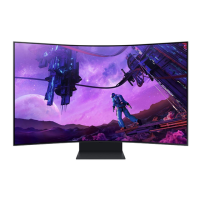

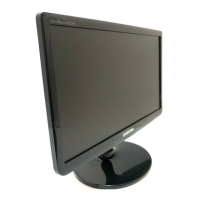
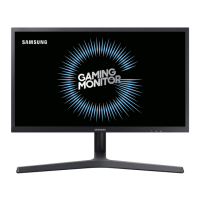
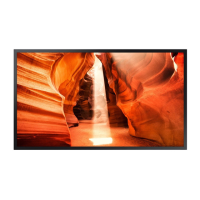
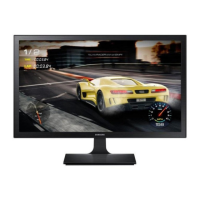
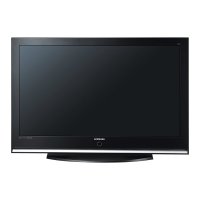
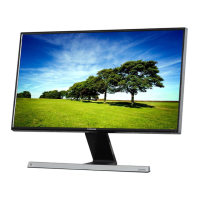
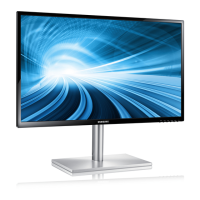
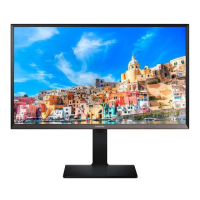
